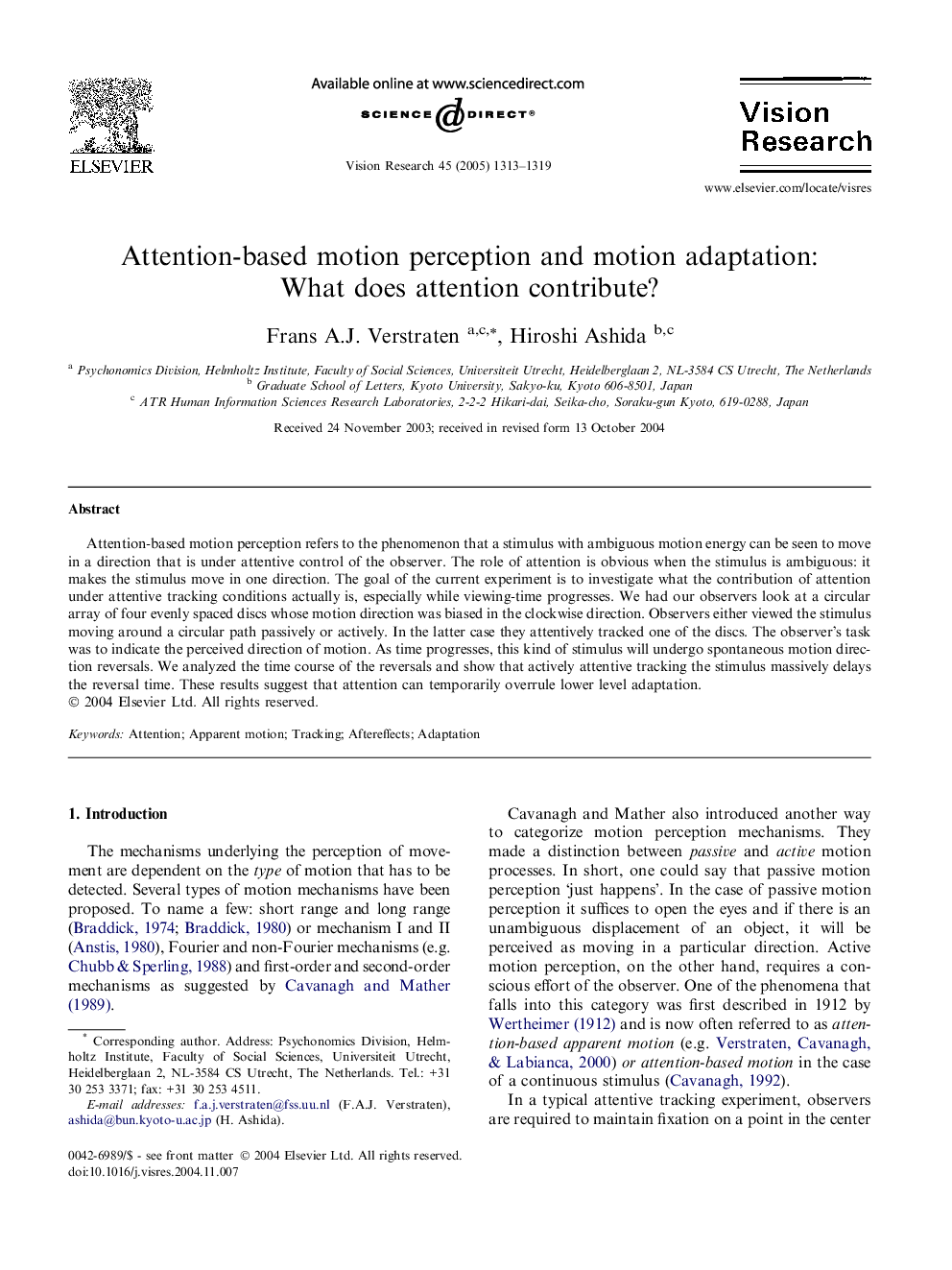| Article ID | Journal | Published Year | Pages | File Type |
|---|---|---|---|---|
| 9348514 | Vision Research | 2005 | 7 Pages |
Abstract
Attention-based motion perception refers to the phenomenon that a stimulus with ambiguous motion energy can be seen to move in a direction that is under attentive control of the observer. The role of attention is obvious when the stimulus is ambiguous: it makes the stimulus move in one direction. The goal of the current experiment is to investigate what the contribution of attention under attentive tracking conditions actually is, especially while viewing-time progresses. We had our observers look at a circular array of four evenly spaced discs whose motion direction was biased in the clockwise direction. Observers either viewed the stimulus moving around a circular path passively or actively. In the latter case they attentively tracked one of the discs. The observer's task was to indicate the perceived direction of motion. As time progresses, this kind of stimulus will undergo spontaneous motion direction reversals. We analyzed the time course of the reversals and show that actively attentive tracking the stimulus massively delays the reversal time. These results suggest that attention can temporarily overrule lower level adaptation.
Related Topics
Life Sciences
Neuroscience
Sensory Systems
Authors
Frans A.J. Verstraten, Hiroshi Ashida,
